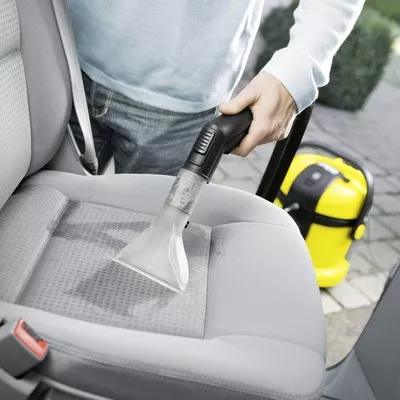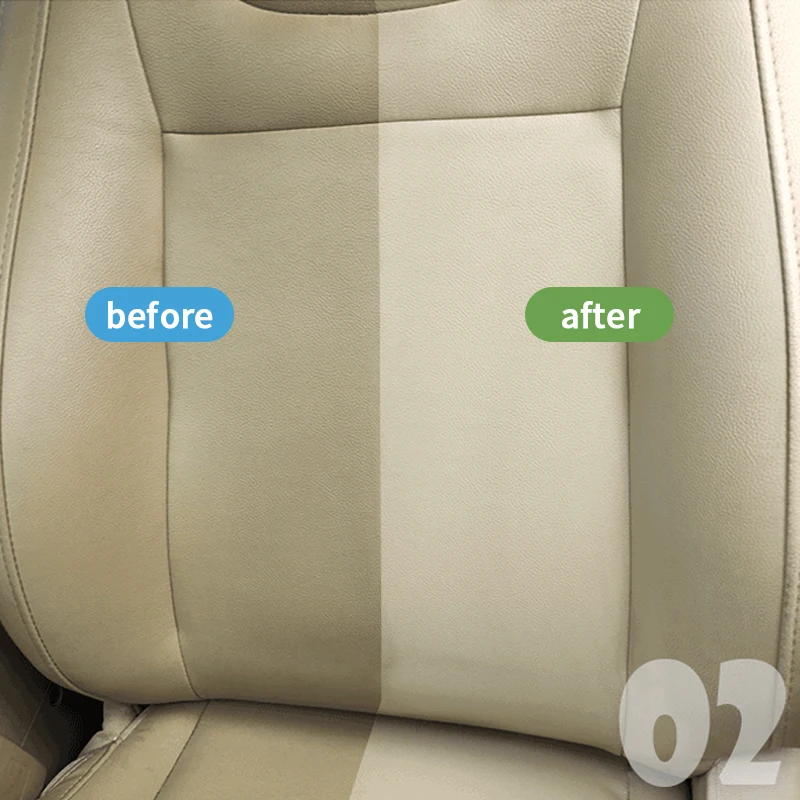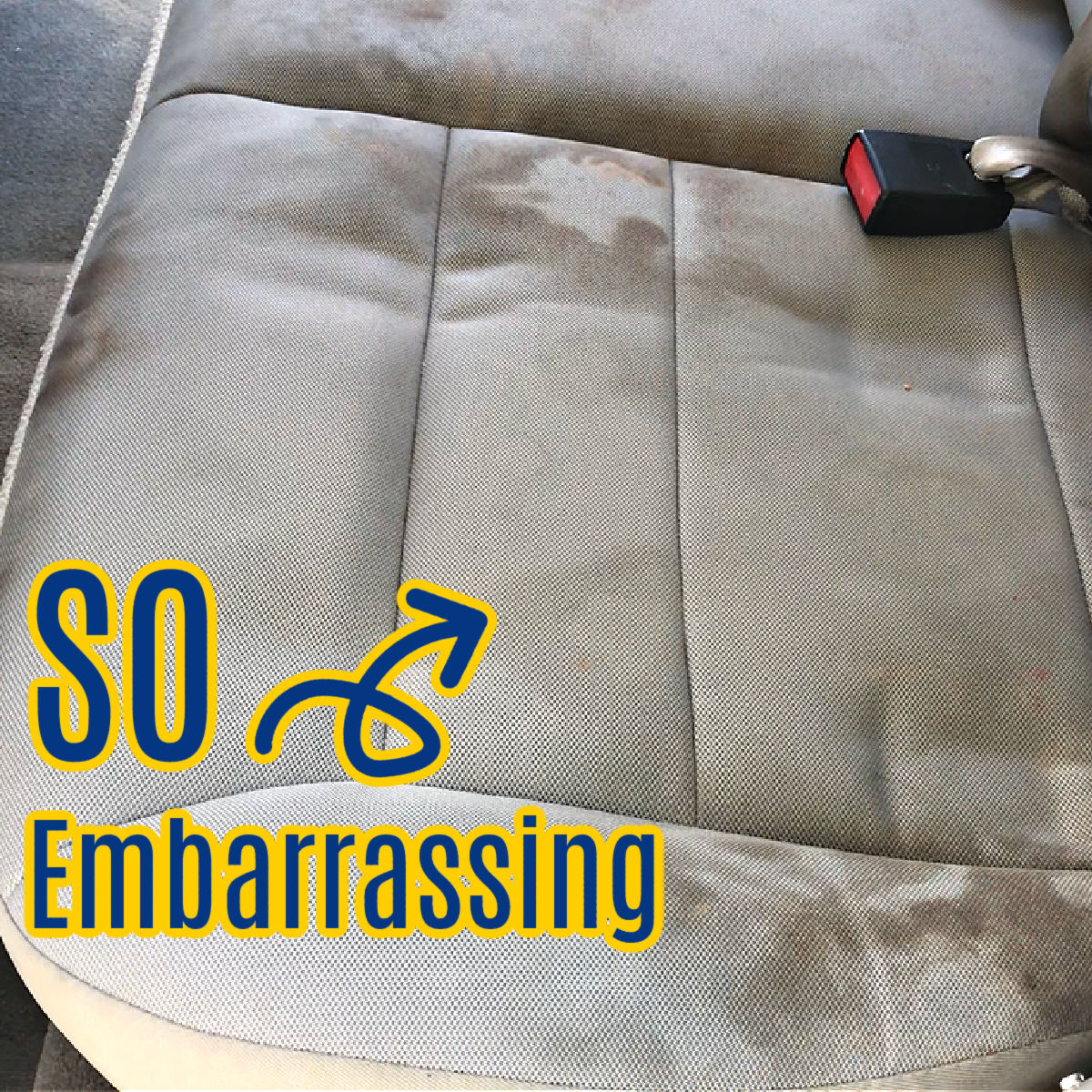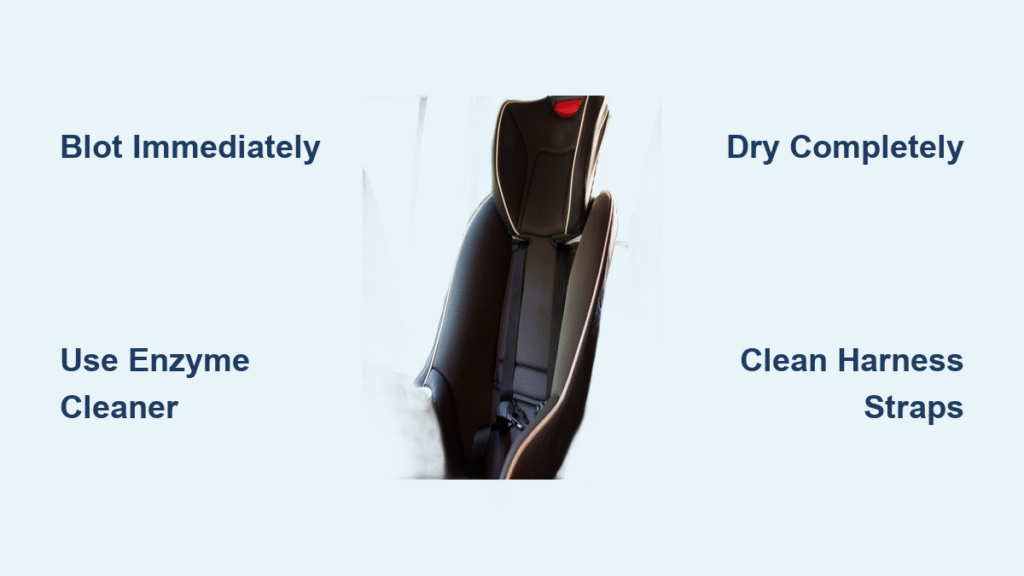Your toddler’s sippy cup just exploded across the backseat, and now milk is seeping into the upholstery. Every second counts—milk proteins bond with fibers within minutes, creating stubborn yellow stains and that sour odor that lingers for weeks. If you’re staring at a damp car seat wondering how to get milk out of a car seat fast, this guide delivers proven solutions. I’ll show you exactly how to extract fresh spills and resurrect dried-in stains using materials you likely have at home, while protecting delicate fabrics and child seat safety.
Stop Milk Spread Within 5 Minutes
Milk penetrates deeper under vehicle movement, so pull over immediately if driving. Delaying beyond 5 minutes guarantees permanent staining as sugars feed bacteria and proteins harden in foam padding.
Blot, Don’t Rub Technique
Press paper towels straight down onto the spill—never scrub sideways. Lateral motion forces milk deeper and expands the stain. Lift vertically, rotate to a dry section, and repeat. For thick upholstery, stand on layered towels to apply full body weight. Stop when towels show minimal moisture transfer.
Extract Hidden Moisture From Foam

Even “dry” surfaces hide milk in foam padding. Use a wet/dry vacuum (minimum 3-gallon capacity) held 2 inches above the stain for 30 seconds. Without a vacuum, press a folded microfiber cloth over the area and walk heel-to-toe across it for 60 seconds. Repeat until no dampness transfers.
Isolate Contaminated Components
Remove seat covers, floor mats, and cushions immediately. Place them in sealed plastic bags to prevent cross-contamination. If dealing with a child car seat, detach harness straps but never submerge LATCH anchors—water compromises their structural integrity.
Clean Fabric Car Seats Without Fading Colors
Standard and premium fabrics require pH-neutral solutions to avoid color bleeding while breaking down milk proteins.
Create the Perfect Cleaning Solution
Mix 1 teaspoon fragrance-free dish soap with 2 cups lukewarm water. For dried stains, add 2 ounces of protease-based enzyme cleaner (like Lightning Fast Stain Remover). Always test on a hidden seam first—milk residues can react unpredictably with dyes.
Step-by-Step Fabric Cleaning Process
- Vacuum surface debris using a soft-brush attachment to prevent grinding particles into fibers
- Dab cleaning solution onto a microfiber cloth and work from the stain’s outer edge inward
- Blot aggressively with dry towels until suds disappear—rinse cloth frequently to avoid redepositing grime
- Treat lingering stains with enzyme spray, cover with plastic wrap for 30 minutes, then blot dry
Eliminate Sour Milk Smell For Good
Sprinkle ¼-inch baking soda layer over the area and gently brush it into fibers. Wait 15 minutes (overnight for severe cases), then vacuum thoroughly. If odor returns after 48 hours, place activated charcoal sachets under the seat for 72 hours—baking soda alone won’t neutralize deep-set bacteria.
Treat Leather Car Seats Without Cracking
Milk’s acidity degrades leather if cleaned improperly. Never use vinegar directly or standard upholstery cleaners.
Safe Leather Cleaning Formula

Combine ½ teaspoon pH-neutral castile soap with 1 cup distilled water. For odor removal, mix 1 part white vinegar to 1 part water plus 2 drops olive oil—but only apply to a cloth, never directly to leather.
Critical Leather Cleaning Sequence
- Test cleaner under the seat for 10 minutes to check color-fastness
- Wipe with barely-damp microfiber following the leather grain in straight lines
- Dry immediately with a lint-free towel—leather must never stay wet
- Condition every 3 months with leather-specific products to prevent milk-induced dryness
Never do this: Sprinkle baking soda directly on perforated leather. The granules scratch surfaces and clog pores, causing irreversible damage. Instead, leave an open container under the seat overnight.
Handle Waterproof and Luxury Fabrics
Waterproof covers and suede require specialized approaches to avoid delamination or nap damage.
Waterproof Cover Emergency Protocol

Blot spills within 30 seconds before liquids seep through seams. Use only manufacturer-approved cleaners—most allow mild soap solutions but ban steam cleaners. High heat melts waterproof membranes, causing bubbling and peeling. Check tags for solvent restrictions before applying anything.
Suede and Alcantara Rescue
Spray dry-cleaning solvent aerosol 6 inches from the stain. Gently lift residue with a horsehair detailing brush using short strokes with the nap. For persistent milk rings, stop immediately—these materials need professional care ($75–$150 per seat). DIY attempts often stiffen fibers permanently.
Destroy Set-In Milk Stains

Old spills require aggressive treatment while protecting material integrity.
White Vinegar Deep Clean (Fabric Only)
Mix 2 parts warm water, 1 part white vinegar, and 2 drops dish soap. Spray until damp (not soaked), agitate with a soft brush for 20 seconds, then blot with microfiber. Air-dry with windows open—vinegar’s acidity breaks protein bonds without bleaching.
Hydrogen Peroxide Spot Treatment
For light-colored fabrics, dab 3% hydrogen peroxide on a cotton swab over crusty stains. Let bubble for 5 minutes, then blot and rinse. Test first—peroxide can yellow synthetic blends. Never use on dark fabrics.
Dry Car Seats Completely in 2 Hours
Incomplete drying causes mold within 24 hours. Here’s how to accelerate evaporation:
Emergency Drying Method
Park in direct sunlight with all doors/windows open. Position two box fans to create cross-ventilation: one blowing into the cabin, another pulling air out. Place rechargeable silica-gel dehumidifiers under seats—they absorb 30% more moisture than towels alone. Check foam padding by pressing firmly; continue drying until no dampness transfers to cloth.
Critical child seat warning: Harness straps must dry completely before reuse. Hang them vertically for 24 hours—mildew inside webbing compromises crash safety. Rinse buckles with water only; soap residues prevent proper latching.
Prevent Future Milk Disasters
Invest 10 minutes now to avoid 2-hour cleanups later.
Spill-Proofing Essentials
- Bottles: Use 360° sealing lids like Contigo AUTOSEAL (tested to withstand 6-foot drops)
- Seat Protectors: Install machine-washable covers like Brica Seat Guardian that tuck under seat edges
- Custom Armor: Opt for neoprene covers ($120–$300 per row) that seal against foam layers
Maintenance Schedule That Works
- Weekly: Vacuum seat crevices with a crevice tool—crumbs absorb future spills
- Monthly: Wipe surfaces with damp microfiber + 1 tsp castile soap per quart water
- Quarterly: Rent a carpet extractor ($25/day) for deep foam cleaning
When to Call Professionals
DIY fails on severe contamination or child seat safety concerns.
| Service Type | Cost | Best For |
|---|---|---|
| Hot-Water Extraction | $100–$175 | Milk soaked into foam padding |
| Child Seat Cleaning | $75–$150 | Certified safety-compliant cleaning |
| Leather Restoration | $150–$250 | Acid-damaged seats with odor issues |
Never attempt: Steam cleaning on leather or child seats—heat sets proteins permanently.
Milk Spill Emergency Kit
Keep these in your trunk:
– Microfiber cloths (6-pack, 400 GSM)
– 3-gallon wet/dry vacuum
– Enzyme cleaner spray (protease-based)
– pH-neutral leather cleaner
– Rechargeable silica dehumidifier
Quick Milk Cleanup Cheat Sheet
Fresh cloth spill: Blot → enzyme spray → baking soda → sun-dry
Fresh leather spill: Blot → pH-neutral cleaner → immediate drying → conditioning
Old crusty stain: Vacuum debris → vinegar solution → soft brush → repeat if needed
Child seat flood: Remove cover → hand-wash straps → buckle rinse → structural check
Milk spills won’t ruin your car seat if you act fast with the right techniques. The key is immediate liquid extraction followed by enzyme treatment—never let milk dry untreated. Keep this guide accessible because with toddlers, it’s not if but when the next sippy cup launch happens. Within 48 hours of proper cleaning, your car seat will look and smell like new, saving you $200+ in replacement costs. Most importantly, you’ll maintain child seat safety without compromising structural integrity—because nothing matters more than getting everyone home safely.





